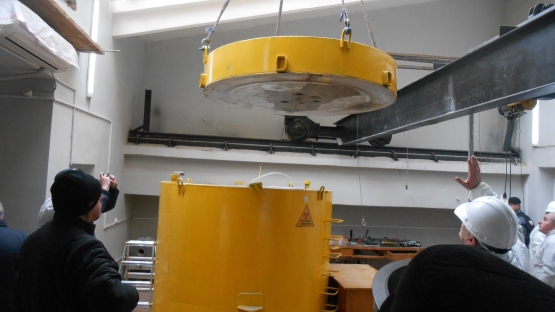Tbilisi, Georgia — The secure delivery of a shipment of high enriched uranium (HEU) from Georgia on 22 December 2015 marks another achievement in global nuclear non-proliferation efforts. The 1.83 kilogrammes of HEU was removed from the Breeder-1 Neutron Source at Tbilisi State University in Georgia to a secure storage facility in the Russian Federation.
“Removing HEU from the Breeder-1 is one of the recent contributions to international efforts to minimize the civilian use of HEU,” said Christophe Xerri, Director of Nuclear Fuel Cycle and Waste Technology Division at the IAEA. “It is also an example of how the IAEA can help Member States in achieving their non-proliferation and nuclear security objectives.”
HEU can be a nuclear proliferation and security concern because it can eventually be used for producing material used for nuclear weapons. The IAEA is supporting Member States in their efforts to replace HEU with low enriched uranium (LEU) in research reactors and neutron source facilities worldwide. The IAEA also provides technical knowledge, research support, and equipment.
Successful accomplishment of this shipment operation was due to the effective cooperation of all parties.







